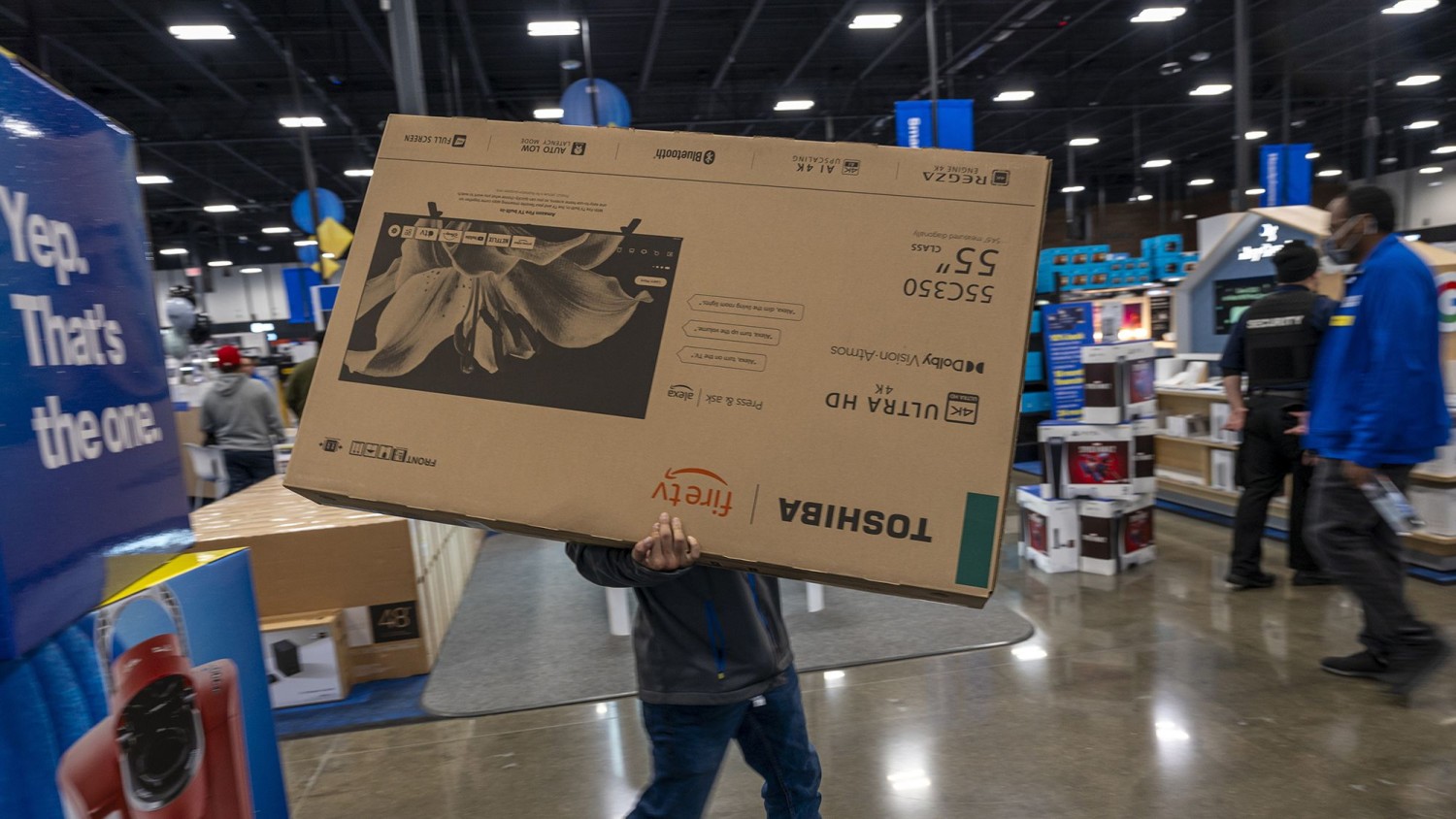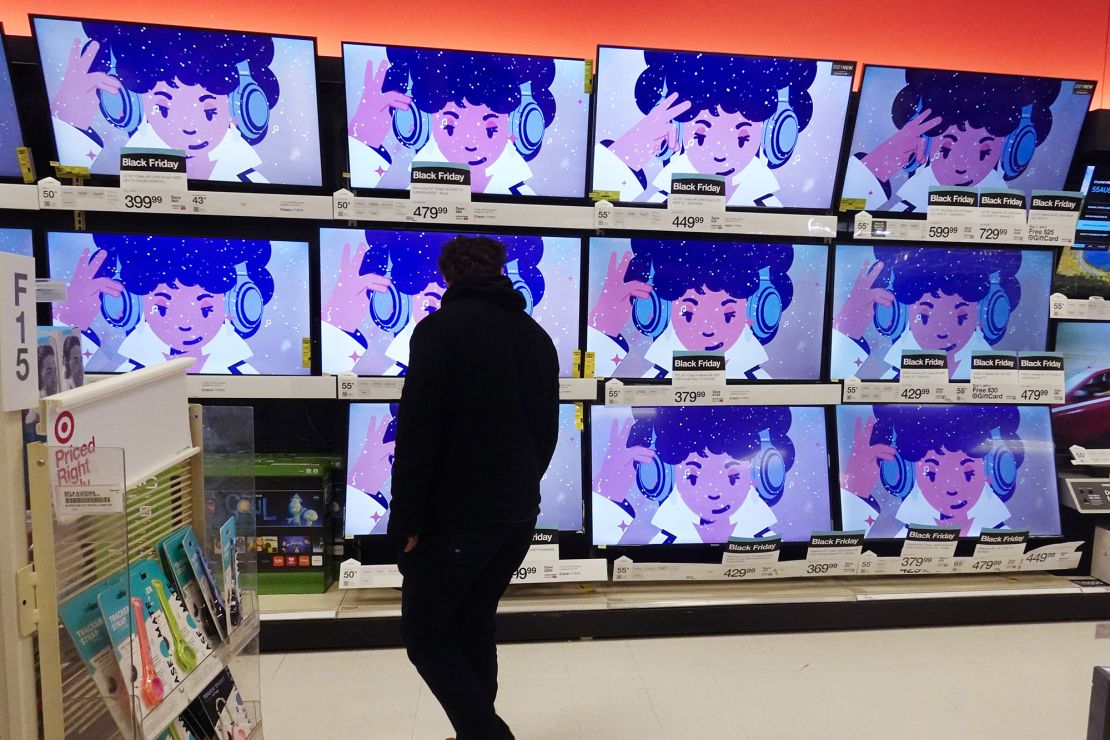
This article is more than
3 year old
| Los Angeles CNN — In March 1973, electronics manufacturer RCA Corporation touted its “new low-price color TV” in the New York Times. The cost was $379.95 for a 15-inch model — the equivalent of a $2,694.32 splurge in current dollars.
These days — in an era of above-average inflation — it can feel like everything from groceries to new cars has gotten more expensive. But one living room staple has managed to defy rising prices and even got less expensive over time: the television. Today, you can snag a 32-inch TV — more than double the size of RCA television from 1973 — for under $100. Did television makers lower the prices out of the kindness of their hearts? Hardly. Several factors have contributed to cheaper TVs, some of them manufacturing related and others more about marketing. There’s increased competition, a more efficient production process, plus the proven drawing power of deals. At brick-and-mortar stores like Best Buy and Target, and online retailers like Amazon, some 55-inch TVs are retailing for under $250 — at full price. But perhaps most importantly, there’s a new lucrative revenue stream for TV manufacturers: selling information about you. Today, most TV makers are data-brokers, profiting off the information they collect from their internet-connected customers. Faster flat screens The uses of television sets have changed and so have their appearance. What was for decades once a bulky piece of furniture, sometimes inlaid in carved wood, is now a thin, glossy black panel that can be popped in your shopping cart and hung on your wall. Some current models are even designed to look like a picture frame. As the materials used to build television sets have changed, so too has the manufacturing process. One of the biggest improvements to that process is a scientific development called “mother glass,” which is what has helped to produce ever-larger TV screens. |

|
Over time, TV manufacturers have figured out how to cut costs by punching multiple screens out of one larger sheet of mother glass rather than individually producing each screen, said Paul Gagnon, consumer technology industry advisor at Circana, a market research company. “The easiest way to lower the cost is to make them out of a larger starting piece of glass,” Gagnon said. “That’s why as TVs have gotten bigger, the price hasn’t really gone up.” But this design also has a downside: as modern TVs have gotten narrower and lighter, the risk of them toppling over or breaking has increased. The internet is filled with customer reviews lamenting fragile flat-screen TVs. New players enter the market Another factor driving prices lower: increased competition. In the last few years, new companies have entered the US market with relatively low-cost offerings, ratcheting up competition for legacy TV makers. Two of the more popular recent additions are Chinese companies — TCL began selling TVs in the United States in 2014, and Hisense entered the market in 2015. Both are growing market share across the globe. |

| A man photographs TCL 4K UHD TVs during the 2017 Consumer Electronic Show (CES) at the Las Vegas Convention Center in Las Vegas, Nevada, January 5, 2017. David McNew/AFP/Getty Images
TCL is widely available at big-box stores and is now as ubiquitous as Motorola or RCA was decades ago. “Going back to the olden days of the TV business, about 20 years ago, there were a fewer number of companies selling TVs and they kind of owned their manufacturing technology,” Gagnon said. Advancements made in the manufacturing process have made it easier to compete, driving down prices in the market. “A result of that competition is lower profit margins over time,” Gagnon said. High-end TV features Not all TVs are dirt cheap. Pricey add-ons usually not included with discount models are built-in sound bars and audio processing, 4K resolution, “motion smoothing” and a wider range of color and brightness levels. Most TVs offer some variation of LED technology, using light-emitting diodes to illuminate your screens. But ones with the highest picture quality, known as OLED TVs, can still retail for thousands of dollars. OLED is short for organic-light-emitting diode. Each pixel provides its own light source in an OLED panel, producing extremely accurate and consistent color. These devices are made by companies like LG and Sony, and they are generally the thinnest and most expensive offerings on the market. Who is watching whom? In the last decade, the television industry has experienced a major shift: a growing number of Americans no longer rely on traditional cable-bundles for entertainment. Instead, they get their entertainment from a crowded field of streaming services, like Netflix, Max and Disney+. In fact, Americans watched more than 19 million years’ worth of streaming content in 2022, according to Nielsen’s annual marketing report. Yes, 19 million years. These days, it’s hard to come by a TV without the ability to access streaming content easily. These modern, internet-connected TVs are called “smart TVs.” Just as streaming services disrupted the cable business, smart TVs have shifted how television makers do business. “As we watch TV, our TVs watch us,” said Sara Geoghegan, a consumer privacy advocate and legal counsel at the Electronic Privacy Information Center. “Smart TVs collect tons of information.” |

|
Geoghegan said the amount of data each TV manufacturer collects can often be opaque, but once a customer sets up their smart TV, viewing habits, location, and potentially more personal data are collected and shared — unless that customer adjusts the device’s security settings. This new business model changes the calculation for TV manufacturers. “Every TV maker who either sells a TV using their own proprietary Smart TV operating system, or whether they work with a third-party streaming company like a Roku or Amazon Fire TV, it’s important to sell as many units on your platform so you have more eyeballs for things like advertising or more subscription sign up opportunities,” Gagnon said. This push for more data may also incentivize TV producers to lower prices, he added. Not everyone is happy with the idea that the device mounted on your wall can gather intel. Geoghegan argued that many people may be uncomfortable learning that a spying tool was one of the primary reasons their new flatscreen was on sale for $70. “I think when you’re browsing your television, you don’t expect that these kinds of intimate things that are just happening inside your home will be used in this way to profile you, and sell you things,” Geoghegan said. “The monetization of our personal information is a problem that we should be concerned about.” |